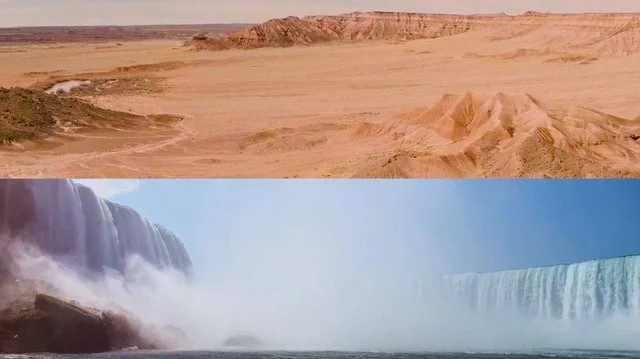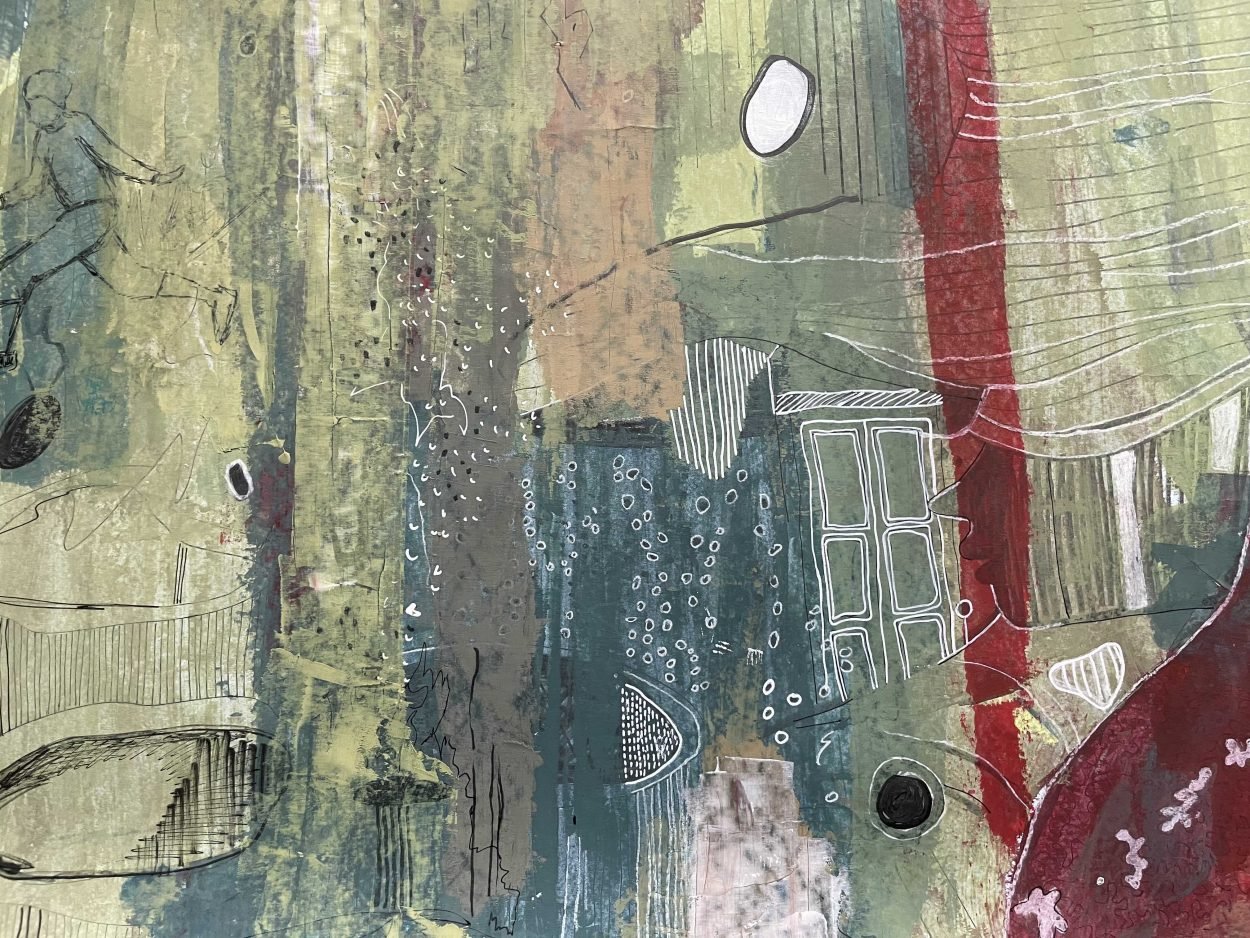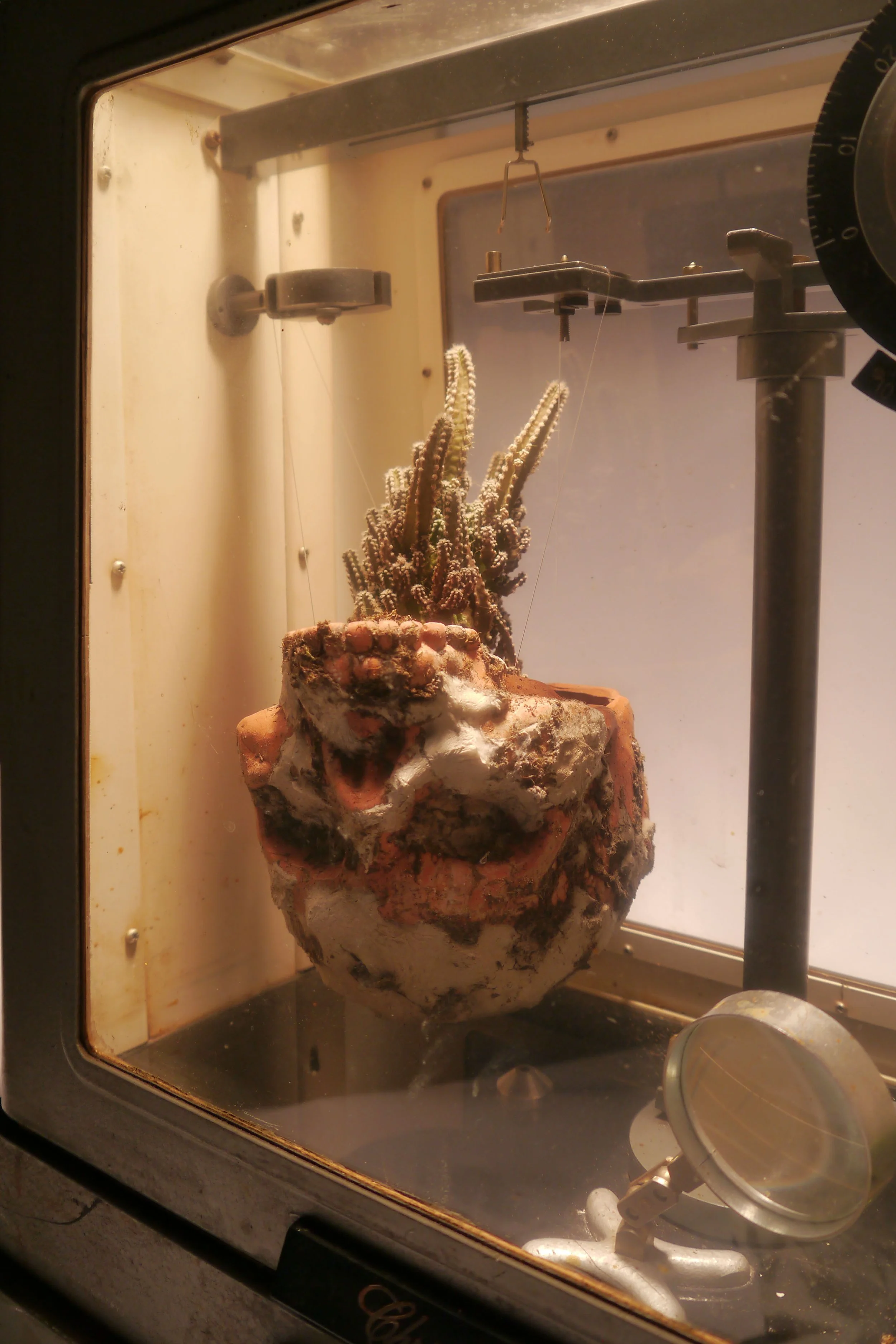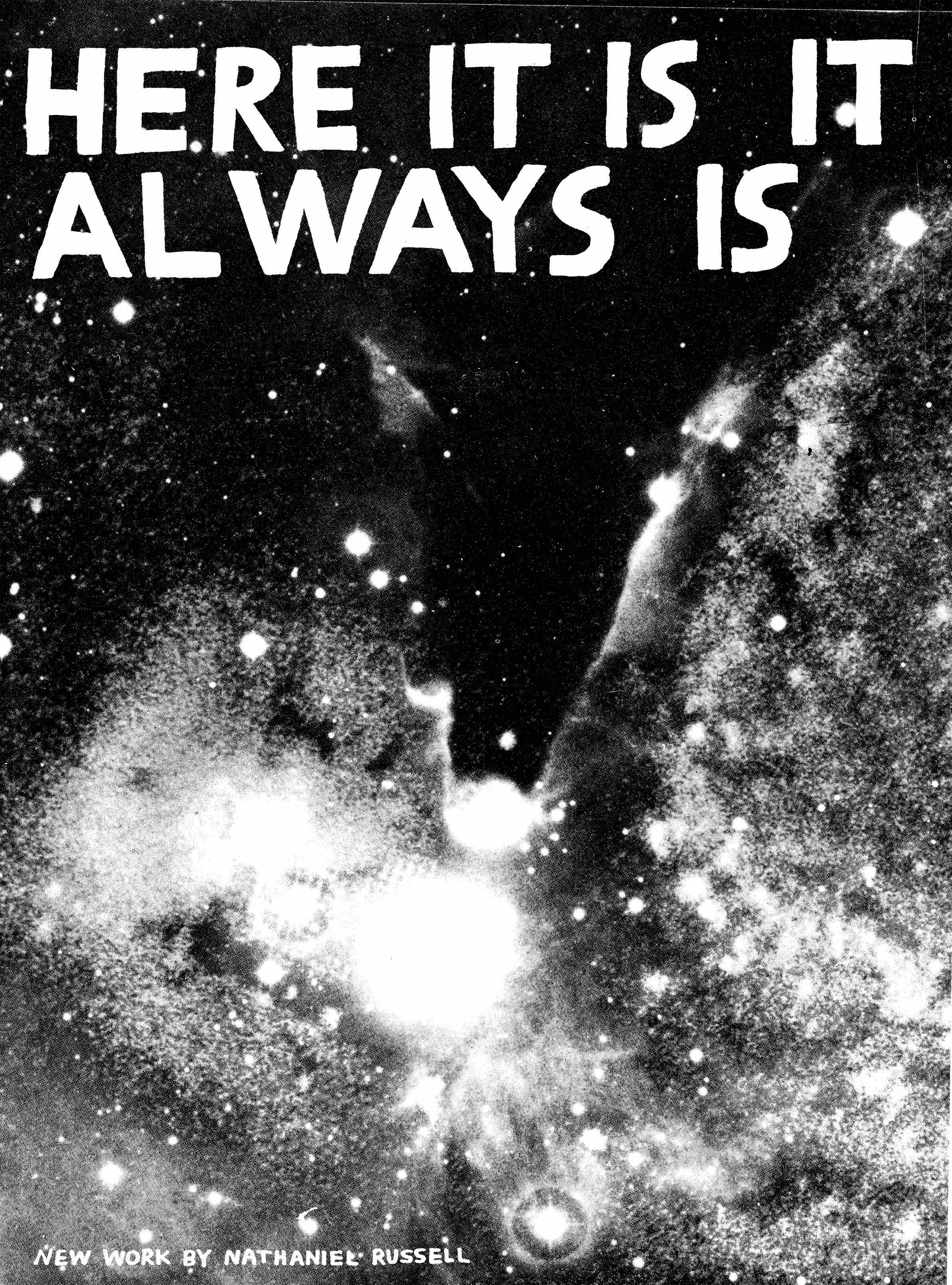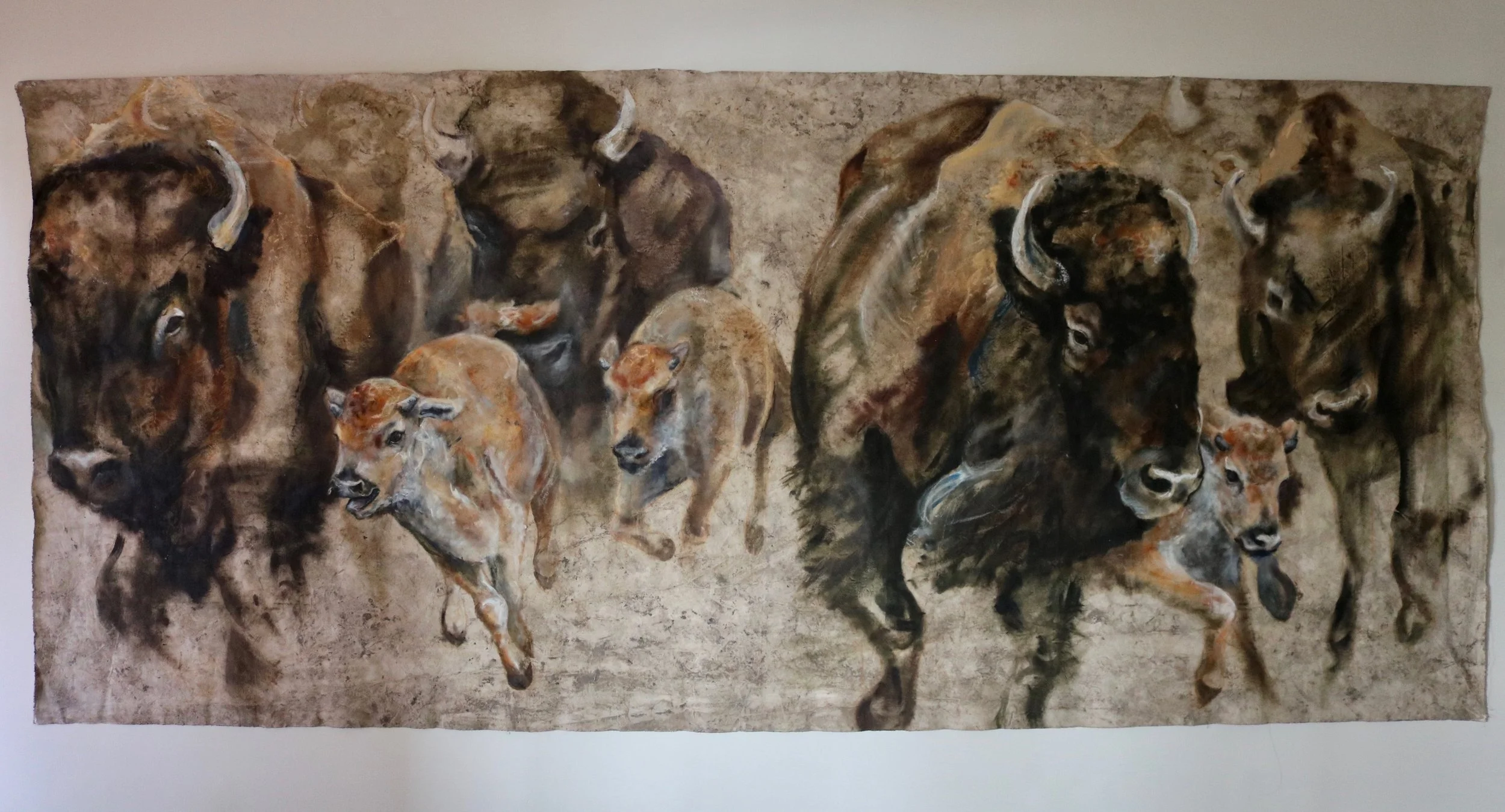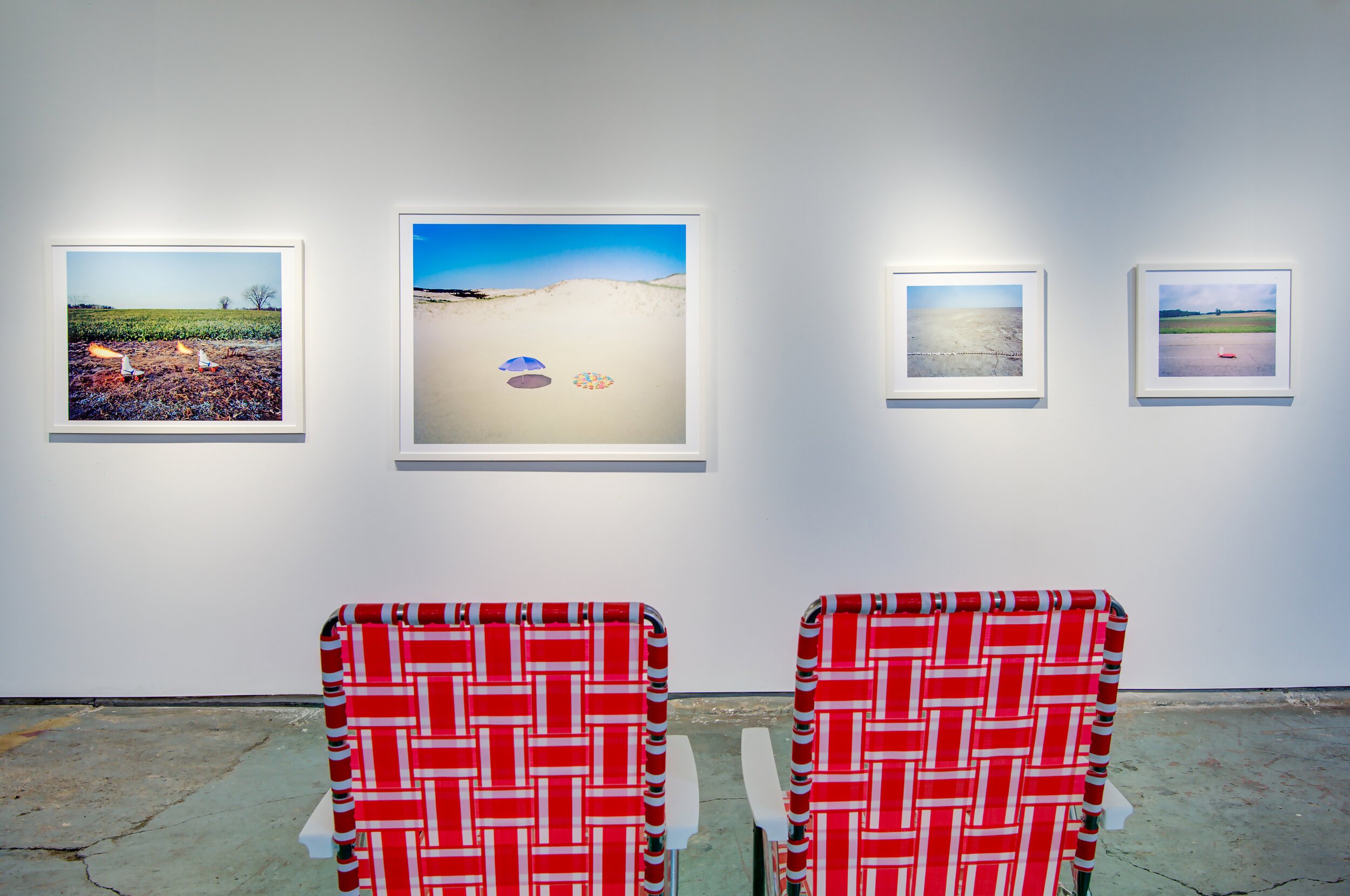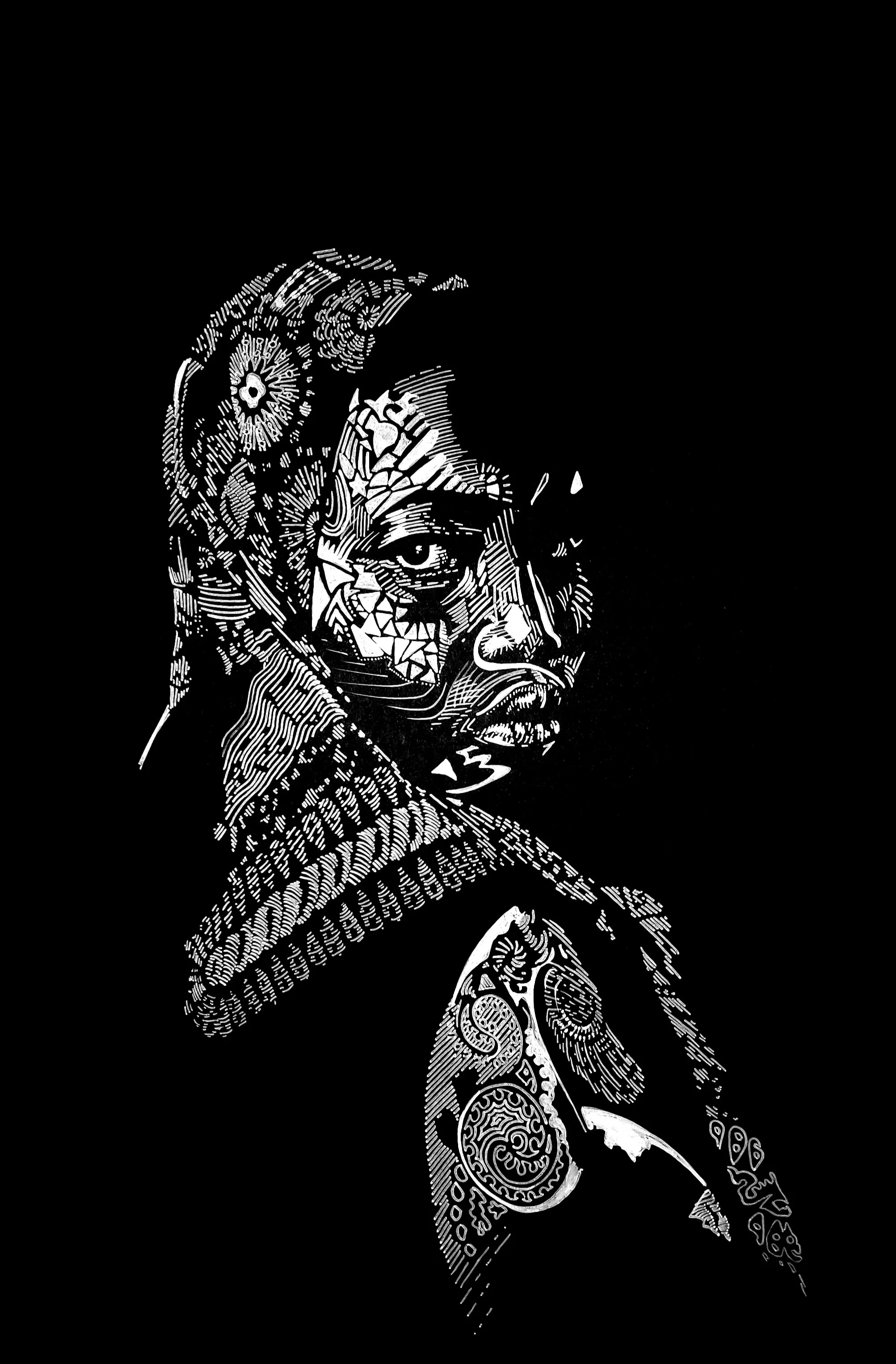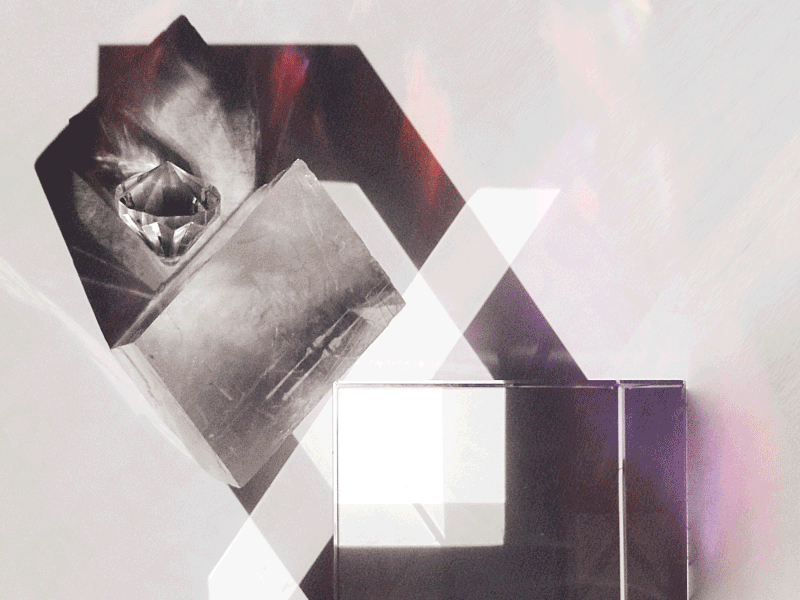Exhibitions
2025
Each performance is a chance to step into a world where music and nature intertwine—a rare and intimate experience.
Flore Laurentienne is an open window to the technicolor soundscapes of Mathieu David Gagnon – the Canadian composer, producer and multi-instrumentalist who shapes vast orchestral sound to interpret the rugged wilderness and waters of his native Québec. The namesake of an inventory documenting St. Lawrence Valley flora, Flore Laurentienne illumes the science and spirit of his surrounds through expansive string orchestrations melded with the textures and experimentation of early analogue synths.
“My Child, I will feed you, give you good health, and I will give you strength and courage.”
These are the opening words of Steven J. Yazzie’s 2015 video, Mountain Song, which appear scrawled across the inky blank screen in white letters. The work evokes that of an epic poem akin to Homer or Virgil, signifying a journey that lies before the one who watches and listens to it.
“BODEWADMI NDAW is a documentary about the efforts of my people to revitalize our language, Bodwéwadmimwen,” filmmaker Davis Henderson said. “The title is a declaration. It means ‘I am Potawatomi.’”
Potawatomi (Turtle Clan) artist Jason Wesaw’s exhibit consisting of sculpture, drawings, prints, and installation is linked to the beliefs of his culture related to land, specifically the ground where Tube Factory now sits. This land has been part of Potawatomi lands at different times in history before the United States existed. For this reason, Wesaw used earth and materials from Terri Sisson Park on the Tube Factory campus to create some of the works in this fully commissioned show.
2024
Thirty-foot-long scrolls telling a story of self acceptance and belonging will fill the Main Gallery of Tube Factory artspace starting November 1. The “Jellyfish Person” is the central character in Indianapolis-based artist Julie Xiao’s large-scale ink and gouache works. In Xiao’s immersive exhibit, the audience will follow — and may identify with Jellyfish’s pursuit of finding a place to feel welcomed at, to fit in, and to feel at home.
With this exhibit, Harkins looks at land in two different ways: a path toward healing due to the desecration of burial mounds in New Harmony, Indiana and how the Land Back movement addresses climate change. Harkins, a multi-disciplinary artist based in Tulsa, Oklahoma, and Tube Factory curator Shauta Marsh, researched and worked on this exhibit for five years as part of Big Car Collaborative’s decade-long research project, Social Alchemy, that explores utopia and dystopia with an emphasis on the southern Indiana town of New Harmony that was twice the site of utopian experiments.
“Words cannot describe everything we feel. How can one accurately verbalise the sensation we feel when we’re a newborn and our mother holds us in her arms, and we feel her skin on our cheek. We clearly feel her warmth and humidity, some feeling of love from her, but it’s tough to verbalise it perfectly. Music is a language that can translate that sensation, feeling, the memory of love.” — Hatis Noit
Ocean resembles a soap opera, but with the eerily calm, disembodied voice-over of a guided meditation: “If you don’t want to drown, be an ocean.” The video begins by instructing the viewer to adjust her posture in relation to the screen and finishes by likening the viewer’s smile at her reflection to “the embarrassment of a blind date”—a playful take on Brechtian Verfremdung.
Most of us live in a world of constant noise and overstimulation, fragmenting our own perception and memory. Information (and misinformation) overload has forever changed the human experience thanks to constant access to the Internet. Instead of living in the moment, we are constantly challenged by the temptation of filling the void with seconds-long dopamine boosts reinforced by our personal algorithms in our artificial digital worlds.
To walk through the installation, Mem, is to enter a myth. A kaleidoscope of the divine feminine, there are fountains of light centering the space on the painting of Miriam– one of the seven major prophetesses of Israel. Miriam carried a rock from which flowed an abundant amount of water during the 40 years Jewish people searched for a place to live in the desert. Access to this water made survival of her people possible.
The abstract textiles and works on paper by Julian Jamaal Jones for his exhibit Take Me Back glean fragments from the songs, poetry, sounds, and his feelings for the Black church experience of the 1990s. The exhibit opens Jan. 5 and runs through March 24 at Tube Factory artspace. Chief curator, Shauta Marsh, was instantly drawn to the works, seeing an element of emotive storytelling in the abstract pieces — something that is quite unique.
2023
As the United States continues to face its history of enslavement, oppression, and exclusion of Black Americans in museums and other arenas of power and recognition, “Process as Practice: Reimagining the Lost Hardrick Mural” is impactful and unique. The exhibit is part of an ongoing partnership between artist Kaila Austin; the Norwood community on the southeast side of Indianapolis, and the family of Indiana’s Harlem Renaissance painter, John Wesley Hardrick (1891-1968).
“In 2015 — after over a decade of painting and art making — I asked myself what brought me to want to create in the first place. Thinking back to my childhood, it was probably directly linked to enjoying playing with plastic blocks and how excited I was to get my hands on a grid-lined sketchbook. I would design my own toys and sketch out the floor plans for houses, cars and symmetrical objects.
The narrative of femininity is pain.
Cicatrix: the scar of a healed wound. In botany, cicatrix refers to the keloid mark left on a tree after a piece of it has been removed. In this body of work, I am exploring the personal maternal scar of being taken away from the only real parental figure I had until that point in life, the complex scars of colonialism and immigration, and the physical scars of my own body.
This body of work is an exploration of the physical and figurative aspects of “place.” On one hand, the word “place” refers to our built environment, choices of design, and our interactions with the physical world. On the other hand, it refers to a sense of belonging that is cultural and emotional–still deeply tied to the physical world, but able to exist without it through memory. I invite the viewer to step into the threshold separating “here and now” from”‘then and there.”
In this body of work, I am exploring the dream that there are still places and things we have not discovered, things we may not even comprehend. Inside of familiar volumes such as instrument cases and terrariums, I am creating spaces that give a glimpse of some other world, somewhere weird and wrong. This is Cthutopia.
In an exploration of this concept, “Grief Etiquette” is an immersive installation about the non-linear stages of my grief, shown through archival imagery and sound.
With “HERE IT IS IT ALWAYS IS,” Russell continues to explore themes of hope, anxiety, compassion and our place in an ever-expanding universe.
In Unearthing, Stirratt explores how natural and cultural objects are presented in collections and museum settings, and how we preserve, classify, and display them.
2022
The solo exhibit in partnership with Arte Mexicano en Indiana features a collection of watercolor and gouache portraits as an invitation to be collectively vulnerable, to create and archive that speaks of intimacy and eroticism.
The exhibit highlights several extinct or threatened species in Posey County. The pre-human ecosystem in our area was abundantly populated and in natural balance. After man settled along the Wabash and elsewhere, this utopian equilibrium eroded to the point of dystopia. The world now faces environmental, social and economic catastrophe, while our perverted material culture still spreads an unrealistic ethos of fossil fuel powered unlimited growth, fast fashion, junk food and surveillance capitalism.
In his first solo exhibit, Davis creates a room-shaking, fifteen-minute surround sound piece that traces the tragic and deadly ironies, lies, and realities comprising the Vietnam War. This, staged among ephemera and original illustrations by Chicago-based visual artist Keith Couture, are laid bare for us to sit with and listen through in hopes that we may gain a clearer understanding of the relationship between capitalism and the endless conflicts that occur for or against its profits.
Sister Song: The Requiem is a community-based project that examines how art and community co-creation processes can be used to heal the intergenerational trauma associated with enslavement and its aftermaths. The project, led by artist LaShawnda Crowe Storm, blurs the lines between the public and private by transforming mundane places into sacred spaces through public rituals. A requiem is an act of remembrance for the dead. How does honoring the dead give life to the living? How does the living remember their histories while creating new futures? How does embracing history help us release specific traumas and move toward a future where healing is possible? We explore these questions through the community co-creation process that is at the heart of Requiem: womb making.
Multi-genre visual artists Kelvin Burzon and Jenny Delfuego are creating movement-based work to accompany their visual art as part of a partnership between Big Car Collaborative and Indy Movement Arts.
In Summer 2020 a collective uprising rooted in local civic engagements ricocheted around the world in response to the murder of George Floyd by Minneapolis police officers. While this was going on, Graves photographed memorials, monuments, and sites of the antebellum South and the Confederacy. A Southern Horror is primarily a series of 175 non-fungible token or NFT works.
From the hands of a young person in China, to a shipping container crossing the Suez Canal, to a semi-truck driver transporting containers cross country, to people at the big box or mom and pop who unload them, to everyone going to the stores to buy things. These are carbon borders we’ve created 一 our feet, our cars, trains, planes, streets, and sidewalks all in motion. These borders both connect and divide us.
2021
Life-sized, sprawling canvases house images of animals that learned to live in new worlds, in habitats created by humans. Vidger’s painted canvases are aged with natural elements to move away from traditional, romanticized landscapes. She removes the animals from their environments, from their homes so we see them in this state of limbo, wondering where they go next. “By utilizing natural pigments to age my canvases, I present an alternative landscape that expresses the duality of desolation and splendor.”
For artist Adam Ekberg, moving past boredom means finding a space in which the mind is free to devise a logic of its own, and ordinary objects are liberated from the drudgery of daily life. The resulting photographic interventions are both mysterious and delightful. Cocktail umbrellas no longer shade tropical beverages but rather occupy a sunny beach en masse. Roller skates once relegated to an indoor rink now drag-race across an empty field propelled by burning aerosol cans.
“Fag Family is a series of double portraits of individuals in Nick May's queer community. "These portraits capture the queer relationships, queer spaces, and the liberating magic of queer world-building that I have the privilege to observe and be a part of,” says May.
Pathology is a compilation of photographs, discovered by Taylor and his brother in their grandfather’s attic. The photos, depicting violence and death, were taken during the time he served as a coroner between 1981 and 1990. As Lewandowski reflects on death and is forced to confront it, he writes about the tragic nature of the photographs he shares and pointing to the complicated ideas behind life as he reflects upon the people his grandfather photographed and the endless cycle of life and death.
2020
Amidst an array of light and sound, Skärgården re-imagines cold war paranoia in the Stockholm archipelago in light and sound. The heart of this art installation is a self-organizing wireless mesh network that mirrors aspects of both the isolation and cooperation of an interconnected system of separate parts.
Those of African descent are the most underrepresented group in the world of fine art. Black faces are beautiful. Digging deeper, we see that by working on black surfaces with white ink & paint, Reynolds draws in the light instead of the shadow, with emotive figures emerging from the deep, catching light in the way only melanin can.
The number of sites of incarceration—where people are “pinned
down”—is big as well. It makes sense, right? We need a lot of
buildings and cells in which to lock up all these folks.
Federal prisons. State prisons. County jails. City jails. Local lockups.
Part world’s fair exhibit, huckster wagon, dime museum, and midway arcade; Snake Oil is a multifaceted installation that challenges the viewer to re-examine the ideas of American Exceptionalism.
Stormy Weather depicts cyclical expressions of anxiety by layering patterns repeatedly into surfaces and space. The paintings and assemblages explore intimate, personal anxiety, and multiply/mirror/repeat the individual to reflect a larger communal state of unease and worry — a collective angst. Uncertainty is stressful, but it is a precursor to transformation.
2019
Baptized in Sugar is a visual memoir of growing up in a house with a unique kind of privilege: we were saturated in unconditional love and allowed boundless exercise of our own free will. That kind of love makes the rest of the world, forever, pale in comparison.
Tube Factory’s Listen Hear space hosted the Indiana premiere of Out There, a concept video album and live performance by the band Princess that explores the roles men play and those they ought to be playing during the current cultural reckoning with misogyny.
New-York-based multi-media artist Saya Woolfalk explores our understanding of the human condition — a state of affairs governed by seemingly unavoidable conflicts such as birth, growth, and death.
Yvette Mayorga’s multi-media installation High Maintenance at Tube Factory was a flamboyantly chilling revelation, offering unsettling insights into how the forces of violence, make-believe, and consumerism infiltrate the contemporary immigrant experience, and subvert our understanding of identity.
As we go about occupying, utilizing, and altering our natural and built worlds, how much do we think about the connections we share with the others who inhabit the place we call home?
Crashing Through the Front Door is a culmination of photography, essays, and oral histories examining queer life in Indianapolis, Indiana through the lens of once-a-month dance party.
Welcome to a world where grownups still build forts and play with flashlights. Where physics are not a classroom subject but a tender and flamboyant muse. Rachel Leigh teases out the sumptuousness of thrift-store glass and discarded TVs, bathing visitors in luminous, improbable delights.
2018
For her debut solo exhibition, Laura Ortiz Vega presented a new series of thread paintings inspired by the rhetoric surrounding President Trump’s proposed US-Mexico border wall and by her documentation of graffiti in Mexico City, Canada, and other cities she had travelled.
These connected projects — related to bees, beekeeping, culture, and community — include an outdoor installation and a resulting exhibit developed by Juan William Chávez, an artist and cultural activist based in St. Louis, during his six-week residency at Tube Factory.
Deeply rooted in place, Land Art (Telling Trees) was inspired by a large-scale fire that tore apart the island of Samos, Greece — the birthplace of the artist.
Heritage is a pressing concern to our generation. Should we allow the past to influence us—are we bound to ancient tools, materials and techniques? Or should we endeavor to make work that is specific to our time, embracing technology and its untested, ambivalent ramifications?
2017
Keeper of My Mothers’ Dreams expanded the dialogues began in Crowe Storm’s works Her Name is Laura Nelson and Be/Coming with newly commissioned pieces: Poems, Origin and Sister Song.
Ariana Reines discusses Ouvrior de Theologies Potentielles at the closing of the Larissa Hammond exhibit. Known for her interest in bodily experience, the occult, new media, and the possibilities of the long or book-length form, Reines has been described as “one of the crucial voices of her generation” by Michael Silverblatt on NPR’s Bookworm.
“The/a mind the b mind” was a fully commissioned exhibit, featuring four large-scale paintings by Larissa Hammond and one in collaboration with poet Ariana Reines.
2016
Hocking spent three weeks in Indianapolis gathering materials from the site, documenting, researching, and creating his installation. He hauled over 100 massive hunks of burned Styrofoam, multiple plastic blobs melted by fires, fragmented fast food signage, nifty anthropomorphic food-character murals, and dozens of other artifacts. He brought this all to Tube Factory. And he worked onsite while living in Big Car’s neighboring artist residency home. The resulting installation uses the main gallery as a kind of ceremonial site — the burned Styrofoam mountain could be a dystopian temple or future glacier.
The People’s 500 was an exploration of the relationship between the Indianapolis Motor Speedway and the people of Indianapolis, marking the 100th Running of the Indianapolis 500 that opened in May of 2016. In October of 2015, Sugarmann chose 100 residents of the Indianapolis community from a pool of applicants to drive two laps in a pace car — the drivers uniting to complete the equivalent of a single running of the Indianapolis 500. Sugarmann and his crew photographed and interviewed each of the drivers, the resulting documentation serving as the material of the exhibition. Sixteen of the drivers were selected as 16 large scale photos, video, and a sculptural piece.
Mari Evans:Carl Pope revolved around Indianapolis-based writer Mari Evans. One of the founders of the Black Arts Movement and longtime Indianapolis resident, Evans published her first work “Where Is All the Music” in 1968 followed by “I Am a Black Woman” in 1970. During this time, Evans also worked as a producer, writer, and director of “The Black Experience” (1968-1973) — a history documentary that aired on prime time in Indianapolis.
Detroit-based Scott Hocking visited Indianapolis in January 2015 and selected the former RCA Factory at Michigan and LaSalle as fodder for his installation. Hocking spent three weeks in Indianapolis gathering materials from the site, documenting, researching, and creating. The resulting installation uses the main gallery as a kind of ceremonial site — the burned Styrofoam mountain could be a dystopian temple or future glacier.


